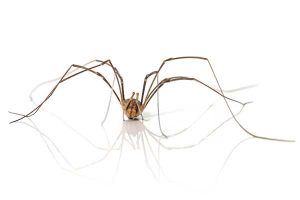Spring in Las Vegas is short lived and as the weather heats up, many insects and pests wake up from a winter’s nap and are ready to get busy finding food. If your Las Vegas or Henderson home proves to be a good source of food for foraging insects and rodents, they will gladly come invade your living space.
In order to prevent pests from getting into your home this spring, here are some indoor spring cleaning tips to keep your home pest free from the Las Vegas pest control professionals at Western Exterminator:
1. Secure Window Screens
Before opening up windows to let the spring breeze flow in, make sure that all windows are secured with screens that fit properly and have no holes. Windows are an easy way for small flying insects to gain entry, so you want to avoid the small holes and loose fitting screens before the windows go up. Also, make sure that if you are going to keep a door open for some extra air flow, you have a screen door to keep the pests out. Open doors are an open invitation for all size pests.
2. De-clutter Your Home
Clean out storage spaces such as the garage, attic, and outdoor sheds. These are perfect homes for pests any time of the year as they are less frequented by humans. Also, any stacks of newspapers or other items provide a great home for pests such as spiders, so you want to be sure that the clutter is gone.
3. Deep Clean Your Kitchen
A deep clean of your kitchen is another good tip to keep the pests out. If there are spills or open food, cockroaches, ants and rodents are likely to find their way into your home. Spend extra time to get rid of any build-up on areas such as under the fridge or stove, the sides of the stove, and in cupboards. It’s easy to let these hidden places be forgotten, but with any food build-up, the pests will try to take advantage.
4. Sanitize Food Surfaces
Make sure to sanitize and clean your food surfaces regularly to keep pests away. If cockroaches or rodents do happen to get into your home, they will leave counters and other food surfaces contaminated, so it is important that you are on top of keeping these places sanitized to protect yours and your family’s health.
5. Spruce Up The Yard.
Branches, leaves, weeds, and dead plants can attract pests. These areas provide a place for the pest to build a nest, and they might eventually come inside your home since the nests are near the building. Also, make sure to get rid of standing water in the yard, because the water could attract mosquitoes since they lay eggs in standing water.
By following these spring cleaning tips, you will be able to enjoy not only a squeaky clean home, but one that is free of any bugs or critters. Due to the amount of time we spend outside in the spring and with open doors and windows, it becomes very important to stay on top of the spring pest prevention measures.
If you tackle these 5 tips and bugs are still trying to take over your home this spring, contact the experts at Western Exterminator for highly effective residential pest control services designed to fit your home.

